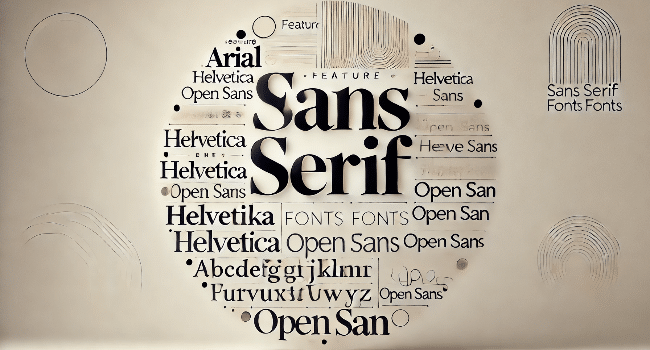Table of Contents
The History of Sans Serif Fonts
The history of sans serif fonts dates back to the late eighteenth and mid-nineteenth centuries. The term “sans serif” comes from the French expression “sans,” which signifies “without” and “serif,” in reference to the little lines or strokes frequently connected to the furthest limit of a more significant stroke in serif text styles.
Sans serif text styles are adaptable and can be used in various configuration programs. Their advantages include the following:
Readability and Clarity
The ideal and essential plan of sans serif literary styles supplements clearness, prevalently on virtual introductions. This makes them best for web plans, cell applications, and virtual association focuses. Sans serif text styles like Arial, Verdana, and Open Sans are routinely used for body text on destinations because of their tidiness.
Modern and Minimalist Aesthetics
Sans serif text styles are inseparable from the current and moderate plans. Their unadorned look conveys effortlessness and class, going with them a well-known decision for brands and modellers holding back nothing look. Textual styles like Helvetica, Avenir, and Proxima Nova mark and promote cutting-edge pictures as often as possible.
Versatility
The adaptability of sans serif textual styles allows them to be used in different settings. They are reasonable for both print and computerized media and might be utilized for body text-based content, titles, logos, and more prominent uses. This versatility makes sans serif text styles an essential device in a creator’s stockpile.
Brand Identity
Sans serif fonts can help create a strong and cohesive logo identity. Their current and easy appearance can convey professionalism, reliability, and innovation. Numerous renowned brands, including Google, Apple, and Nike, use sans serif text styles in their insignias and markings to convey a bleeding-edge and ahead-thinking picture.
Choosing the Right Sans Serif Font
With the vast array of sans-serif fonts available, deciding on the proper one for your mission may take a lot of work. Here are a few recommendations to help you make the exceptional preference:
- Consider the Context: Consider the font’s use and how. For frame textual content, choose a sans-serif font with proper clarity, such as Open Sans or Roboto. Consider fonts with more significant characters for headlines and branding, like Avenir or Futura.
- Match the Tone: Choose a font that matches the tone and persona of your brand or message. For a modern, sleek appearance, opt for geometric sans serifs. Remember humanist sans serifs for an extra approachable and friendly experience.
- Test for Legibility: Ensure the font is legible at unique sizes and on numerous devices. Test the font in specific contexts to maintain its clarity and visible attraction.
Conclusion
Sans serif text styles have become a foundation of current plans, esteemed for their meaningfulness, flexibility, and present-day fascination. From their initial starting points to their strength in the virtual age, sans-serif text styles have progressed to satisfy the changing longings of planners and crowds. Whether you’re developing an internet site, designing an emblem, or growing a brand identification, sans serif fonts offer an undying and robust solution. Knowing their records, traits, and advantages, you may make knowledgeable choices that enhance your layout and conversation efforts.
Read more on KulFiy
